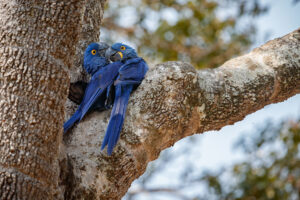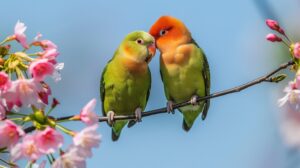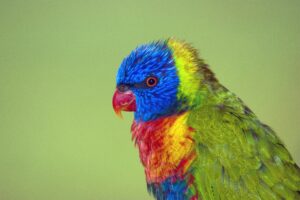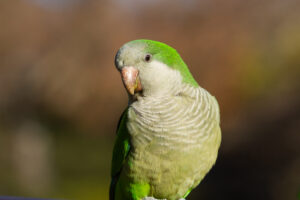With its stunning salmon-pink crest and charismatic personality, the Major cockatoo has captured the hearts of bird enthusiasts across the United States. Also known as the Major Mitchell’s cockatoo or Leadbeater’s cockatoo (Lophochroa leadbeateri), this Australian native stands out among parrot species for its unique appearance and engaging demeanor. However, potential owners should be aware that the Major cockatoo requires specialized care and consideration that goes beyond what many expect from a pet bird.
Understanding Major cockatoo facts is essential before bringing one of these magnificent birds into your home. From their impressive Major cockatoo lifespan to their specific dietary needs, these birds represent a significant long-term commitment that shouldn’t be taken lightly. According to the American Federation of Aviculture, cockatoos are among the most surrendered pet birds due to owners being unprepared for their complex needs.
In this comprehensive guide, we’ll explore seven shocking facts about the Major cockatoo that every prospective owner should know. From their challenging care requirements to their conservation status, these insights will help you determine whether this spectacular bird is the right companion for your lifestyle and home. Let’s dive into what makes the Major cockatoo both a rewarding and demanding addition to your family.
1. Major Cockatoos Have an Astonishing Lifespan
Perhaps the most startling Major cockatoo facts for new owners is their extraordinary longevity. The Major cockatoo lifespan typically ranges from 40 to 60 years in captivity, with some individuals living well into their 70s with proper care. This makes adopting a Major cockatoo a multi-decade commitment—potentially spanning generations within a family.
The Association of Avian Veterinarians confirms that the Major cockatoo lifespan exceeds that of most companion animals, creating unique challenges for long-term care planning. Dr. Brian Speer, a renowned avian veterinarian, notes that “the Major cockatoo often outlives marriages, careers, and sometimes even their original owners, necessitating estate planning that includes provisions for the bird’s future care.”
This extended Major cockatoo lifespan means that:
- Children who grow up with the bird may eventually inherit its care
- Multiple living arrangements across decades must accommodate the bird’s needs
- Financial planning should include long-term veterinary care and proper nutrition
- Potential owners should consider who will care for the bird if they’re no longer able
According to research published in the Journal of Avian Medicine and Surgery, the Major cockatoo ranks among the longest-lived of all cockatoo species, with documented cases of birds reaching 80+ years in optimal conditions. This remarkable longevity represents both a blessing and a challenge for dedicated owners.
2. Major Cockatoo Care Demands Exceptional Commitment
The Major cockatoo care requirements surpass those of many other companion birds, demanding specialized knowledge, significant time investment, and substantial resources. These birds are not suitable for casual or first-time bird owners.
Housing Requirements
According to the Avian Welfare Coalition, proper Major cockatoo care includes providing spacious accommodations. The minimum recommended cage size for a Major cockatoo is 36″ W × 24″ D × 48″ H (91 × 61 × 122 cm), though larger is always better. The cage should feature:
- Bar spacing of 3/4″ to 1″ (1.9-2.5 cm)
- Multiple perches of varying diameters and textures
- Durable construction that can withstand powerful beaks
- Secure lock mechanisms that the intelligent Major cockatoo cannot manipulate
- Placement in a central location where the bird can participate in family activities
Beyond the cage, Major cockatoo care requires bird-proofing your home, as these birds need several hours of supervised out-of-cage time daily. The World Parrot Trust recommends creating safe play areas with appropriate perches, toys, and climbing structures.
Time Commitment
One of the most demanding aspects of Major cockatoo care is the time requirement. These highly social birds need:
- 3-4 hours minimum of direct interaction daily
- Regular training sessions to maintain behavior and mental stimulation
- Consistent daily routine to prevent stress-related behaviors
- Supervised out-of-cage exploration time
- Regular grooming sessions including nail trimming and occasional bathing
Dr. Laurie Hess, a board-certified avian veterinarian, emphasizes that “Major-cockatoo owners should expect their birds to demand attention comparable to that of a young child, but for decades rather than years.”
Financial Investment
The ongoing cost of proper Major cockatoo care can be substantial. According to estimates from the Avian Medicine Center, owners should budget for:
- $200-400 monthly for high-quality food, toys, and supplies
- $300-600 annually for routine veterinary care
- $1,000-3,000 for emergency veterinary funds in reserve
- Specialized lighting and environmental controls
- Regular cage and accessory replacement due to wear
These costs add up to a significant financial commitment over the decades-long Major cockatoo lifespan.
3. The Major Cockatoo Price Reflects Their Rarity
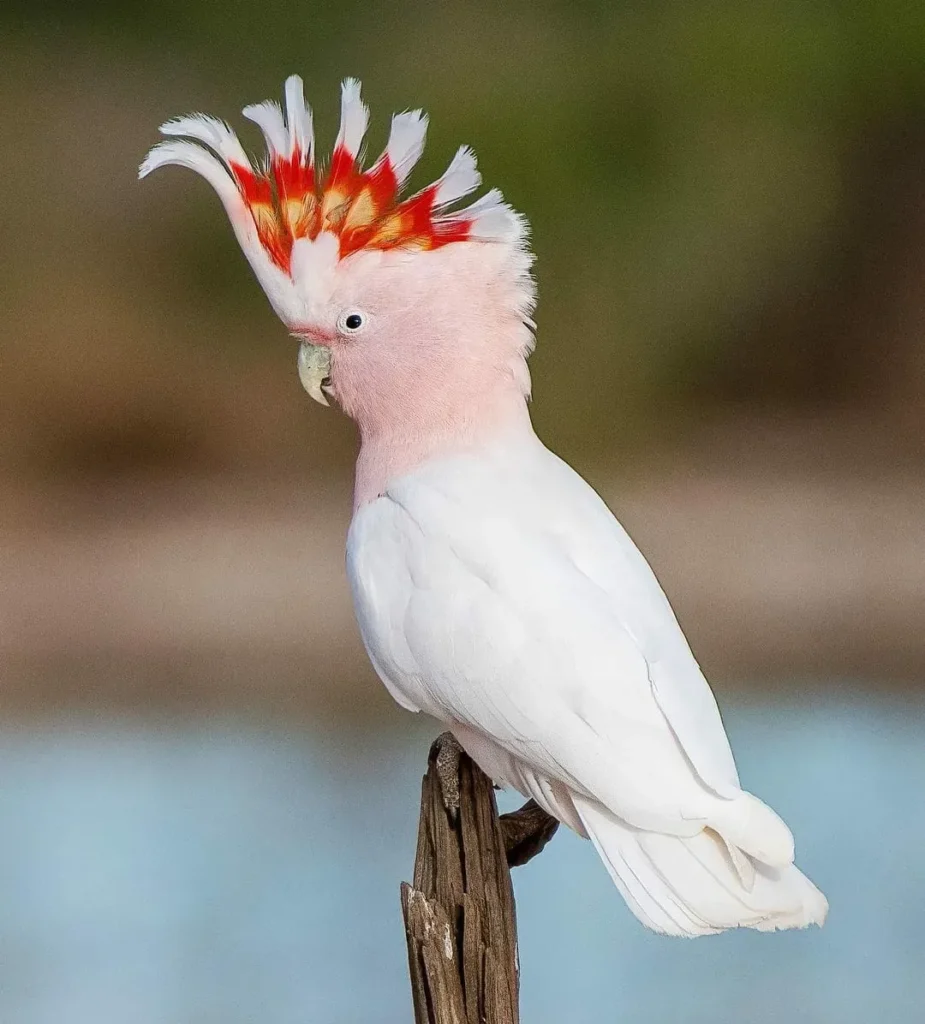
The initial Major cockatoo price often surprises potential owners. As one of the less commonly bred cockatoo species in captivity, the Major-cockatoo commands premium prices compared to more readily available parrots.
Current Market Pricing
According to data from specialized bird breeders and the International Association of Avian Trainers and Educators, the current Major cockatoo price typically ranges from:
- $4,000-$8,000 for hand-raised babies from reputable breeders
- $3,000-$5,000 for young adults with established temperaments
- $2,000-$4,000 for older birds, depending on health and behavior
This substantial Major-cockatoo price reflects several factors:
- Limited breeding success in captivity compared to other cockatoo species
- Specialized expertise required for proper breeding
- High demand for these visually striking birds
- Extended hand-rearing period needed for proper socialization
Finding a Major Cockatoo for Sale
When searching for a Major-cockatoo for sale, it’s essential to work with reputable sources. The American Bird Conservancy warns that unethical breeders may offer birds at lower prices that have not been properly socialized or may have health issues.
Legitimate sources for a Major cockatoo for sale include:
- Specialized parrot breeders with specific experience with the species
- Avian rescue organizations occasionally have Major-cockatoo surrenders
- Bird shows with reputable vendors
- Referrals from avian veterinarians
Dr. Susan Clubb, a renowned avian veterinarian specializing in cockatoos, advises: “The initial Major cockatoo priceshould be one of your smaller concerns. The lifetime cost of care will far exceed the purchase price, and cutting corners on acquisition often leads to behavioral or health problems that prove far more costly in the long run.”
4. Major Cockatoo Size and Habitat Needs Are Substantial
The Major-cockatoo size places them in the medium range for cockatoos, but their habitat requirements are anything but moderate. Understanding their spatial needs is crucial for providing appropriate Major cockatoo care.
Physical Dimensions
According to the Smithsonian National Zoo and Conservation Biology Institute, the typical Major cockatoo sizespecifications are:
- Length: 13-14 inches (33-36 cm)
- Weight: 10-14 ounces (280-400 grams)
- Wingspan: 24-30 inches (61-76 cm)
While not the largest cockatoo species, the Major-cockatoo size still requires substantial space, particularly when you consider their active nature and need for exercise.
Natural Habitat Insights
Understanding the natural Major-cockatoo habitat provides important context for creating appropriate captive environments. In the wild, these birds inhabit:
- Arid and semi-arid regions of inland Australia
- Areas with mature trees for nesting and roosting
- Territories that can span several miles for foraging
- Environments with significant temperature fluctuations
The Australian Department of Environment and Energy reports that the natural Major-cockatoo habitat is increasingly fragmented, contributing to their conservation concerns. In captivity, owners should strive to recreate essential elements of this habitat:
- Varied perching options including natural branches
- Temperature gradients within their living space
- Opportunities for foraging behaviors
- Access to natural sunlight or full-spectrum lighting
- Humidity control appropriate for their naturally dry habitat
Dr. Scott Echols, avian researcher and veterinarian, explains: “The more we can replicate aspects of the natural Major-cockatoo habitat in captivity, the fewer behavioral and health problems we tend to see. These birds evolved specific behaviors for their native environment, and denying those natural tendencies creates stress.”
5. Major Cockatoo Diet Requires Specialized Knowledge

Providing a proper Major-cockatoo diet is essential for health and longevity, yet many owners underestimate the complexity of their nutritional needs. According to the University of California Davis School of Veterinary Medicine, nutritional deficiencies are among the most common preventable health issues in captive cockatoos.
Natural Foraging Habits
In their natural Major-cockatoo habitat, these birds consume:
- Native seeds and nuts from various plant species
- Berries and fruits when seasonally available
- Insects and larvae as protein sources
- Native Australian vegetation including leaf buds and blossoms
- Minerals from soil and clay deposits
This varied Major cockatoo diet provides balanced nutrition and constant mental stimulation through foraging activities.
Optimal Captive Nutrition
The Lafeber Company, specialists in avian nutrition, recommends that a proper Major-cockatoo diet in captivity should include:
- High-quality formulated pellets (50-60% of diet)
- Fresh vegetables with emphasis on leafy greens (30-35%)
- Limited fruits due to sugar content (10-15%)
- Occasional nuts and seeds as enrichment, not dietary staples
- Appropriate calcium supplementation, especially for breeding birds
Dr. Stephanie James, avian nutritionist, notes: “The Major-cockatoo diet should balance nutritional requirements with psychological needs. These birds evolved to spend 60-70% of their waking hours foraging for food, so presentation matters as much as content.”
Common Dietary Mistakes
According to the Avian and Exotic Animal Hospital, these common Major cockatoo diet errors contribute to health problems:
- Seed-based diets leading to fatty liver disease and obesity
- Insufficient fresh foods causing vitamin deficiencies
- Excessive fruit leading to blood sugar issues and dental problems
- Inconsistent feeding schedules creating behavioral issues
- Inappropriate treats (chocolate, avocado, caffeine) causing toxicity
A properly implemented Major-cockatoo diet requires knowledge, consistency, and often significant food preparation time from dedicated owners.
6. Major Cockatoo vs Galah: Understanding the Differences
The Major cockatoo vs Galah comparison is relevant for prospective owners deciding between these two popular Australian cockatoo species. While related, these birds differ significantly in several key aspects.
Appearance Distinctions
The most obvious Major cockatoo vs Galah differences are visual:
- Major-cockatoo: Features a tri-colored crest with salmon-pink, white, and deep red bands; predominantly white body with pink undertones
- Galah: Displays a solid pink crest; gray back and wings with bright pink chest and face
The San Diego Zoo Wildlife Alliance notes that the Major cockatoo is generally considered the more visually striking of the two, contributing to its higher Major-cockatoo price in the pet trade.
Temperament Variations
Significant Major cockatoo vs Galah temperament differences include:
- Major-cockatoo personality: Typically more sensitive, cautious with strangers, forms intense bonds with primary caregiver, can be more prone to stress-related behaviors
- Galah personality: Generally more adaptable, often more accepting of multiple handlers, typically more forgiving of environmental changes
The Avian Behavior Lab research suggests that the Major-cockatoo personality tends toward being more demanding of attention and potentially more challenging for inexperienced owners compared to Galahs.
Care Complexity
The Major cockatoo vs Galah care requirements also differ notably:
- Major cockatoo care: Generally more complex, requiring more consistent routine, more sensitive to diet variations, often more prone to feather destructive behaviors when needs aren’t met
- Galah care: Typically more resilient, often adapts better to modest routine changes, generally more forgiving of occasional care inconsistencies
Barbara Heidenreich, renowned animal trainer and behavior consultant, observes: “In my experience, the Major cockatoo personality demands more precision and consistency in handling compared to Galahs. They’re often less forgiving of training mistakes, making them better suited for experienced bird owners.”
7. Major Cockatoo Pet Ownership: Rewards and Challenges
The decision to bring a Major-cockatoo pet into your home should be made with complete awareness of both the extraordinary rewards and significant challenges these birds present.
The Rewarding Aspects
According to testimonials compiled by the American Federation of Aviculture, Major cockatoo pet owners most value:
- Major cockatoo personality: Their capacity for deep emotional bonding and affection
- Major cockatoo talking ability: While not the most prolific talkers among parrots, many learn 20-40 words and phrases with clear pronunciation
- Their stunning appearance and graceful movements
- Their playful antics and problem-solving intelligence
- The long-term companionship throughout their impressive Major cockatoo lifespan
The Major cockatoo talking ability varies by individual, with males typically developing larger vocabularies than females. The International Association of Animal Behavior Consultants notes that their speech clarity is often exceptional even if their vocabulary is more limited than some other parrot species.
The Significant Challenges
Prospective owners should be equally aware of the challenges inherent in Major cockatoo pet ownership:
Major Cockatoo Noise Level
According to the Centre for Animal Welfare, the Major cockatoo noise level can be particularly challenging:
- Morning and evening calls reaching 120+ decibels
- Territorial screaming when they feel threatened
- Contact calls when separated from their bonded human
- Excitement vocalizations during play or when stimulated
This Major cockatoo noise level makes them unsuitable for apartments, attached homes, or neighborhoods with strict noise ordinances.
Destructive Potential
The powerful beak of a Major cockatoo pet can cause significant damage:
- Destruction of furniture, molding, and doorframes
- Ability to dismantle most standard cages given time
- Potential for household danger through chewing electrical wires
- Capability of inflicting painful bites when frightened or aggressive
Emotional Complexity
The complex Major-cockatoo personality presents unique challenges:
- Potential for jealousy toward other family members
- Tendency toward emotional dependency on primary caregiver
- Stress-related behaviors including feather picking when needs aren’t met
- Need for consistent boundaries and interaction protocols
Dr. Irene Pepperberg, renowned animal cognition researcher, explains: “The emotional intelligence that makes the Major cockatoo personality so appealing also makes them vulnerable to psychological distress when their social and environmental needs aren’t consistently met.”
Major Cockatoo Breeding and Conservation Concerns
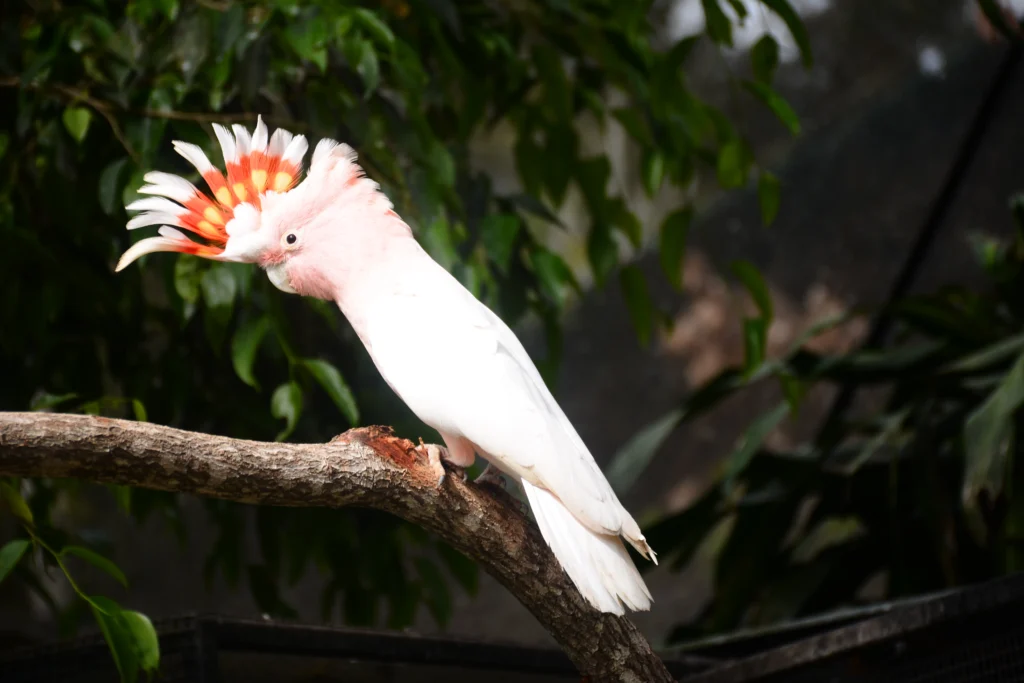
Understanding the breeding and conservation status of these birds provides important context for ethical Major-cockatoo pet ownership.
Captive Breeding Challenges
The Association of Zoos and Aquariums notes several challenges with Major cockatoo breeding in captivity:
- Lower reproduction rates compared to other cockatoo species
- Specific environmental triggers required for successful breeding
- High susceptibility to stress disrupting breeding behavior
- Specialized knowledge required for hand-rearing chicks
- Limited genetic diversity in captive populations
These factors contribute to the relatively high Major-cockatoo price and limited availability.
Conservation Status and Ethical Considerations
The Major cockatoo endangered status is a growing concern. According to the International Union for Conservation of Nature (IUCN), the species is currently listed as Near Threatened in the wild due to:
- Habitat destruction from agricultural expansion
- Illegal trapping for the pet trade
- Competition for nesting sites with introduced species
- Climate change affecting their arid habitat
The World Parrot Trust emphasizes that responsible Major-cockatoo pet ownership includes:
- Ensuring birds are legally bred in captivity with proper documentation
- Supporting conservation initiatives for wild populations
- Never purchasing birds without verifiable origins
- Understanding that domestic breeding of properly sourced birds does not impact wild populations
While not currently meeting full Major cockatoo endangered criteria, wild population trends are concerning enough that conservation efforts are increasingly important for the species’ future.
Conclusion: Is a Major Cockatoo Right for You?
The decision to bring a Major cockatoo into your life requires careful consideration of the facts we’ve explored. These magnificent birds offer extraordinary companionship for those prepared to meet their complex needs, but they’re not suitable pets for most households.
Before pursuing a Major cockatoo for sale, honestly assess:
- Your ability to commit to 40-60+ years of specialized care
- Your housing situation and whether it can accommodate their space and noise requirements
- Your financial capacity to provide appropriate Major-cockatoo care for decades
- Your experience level with birds and willingness to continuously educate yourself
- Your family situation and how it might change during the bird’s long Major cockatoo lifespan
- Your ability to provide daily social interaction and mental stimulation
- Your commitment to providing optimal Major -cockatoo diet and healthcare
For those with the knowledge, resources, and dedication to meet these needs, a Major cockatoo pet can provide unparalleled companionship and joy. Their intelligence, beauty, and affectionate Major cockatoo personality make them extraordinary companions for the right owners.
However, responsible ownership means recognizing that these birds are not suitable for everyone. The high surrender rates of cockatoos to rescue organizations testify to the frequency of mismatched expectations and capabilities. The most compassionate choice may be admiring these magnificent birds in zoological settings rather than bringing one into your home if your circumstances can’t support their specialized needs.
The Major cockatoo facts we’ve explored highlight both the rewards and responsibilities of living with these spectacular Australian natives. Armed with this knowledge, you can make an ethical, informed decision about whether a Major-cockatoo is truly the right companion for your lifestyle and home.
FAQs About Major Cockatoos
Q: How much attention does a Major cockatoo need daily?
A: The Major cockatoo personality demands significant social interaction. According to the Avian Welfare Coalition, these birds require a minimum of 3-4 hours of direct human interaction daily, plus additional time within family spaces where they can observe activity. Without adequate social engagement, Major cockatoo pet birds often develop problematic behaviors including excessive screaming, feather destruction, and aggression. Their high intelligence and emotional sensitivity make them particularly vulnerable to the psychological effects of isolation.
Q: Are Major cockatoos good talkers?
A: While not as prolific as some other parrot species, the Major-cockatoo talking ability is quite good in terms of clarity and tone. According to research from the University of Northern Colorado’s Animal Communication Lab, most Major-cockatoo pet birds learn 20-40 words or phrases, with males typically developing larger vocabularies than females. Their speech is usually very clear and they often develop precise mimicry of household sounds like phone rings, microwave beeps, and even human laughs. Their Major cockatoo talking ability is enhanced by consistent, positive training sessions.
Q: How much does it cost to feed a Major cockatoo monthly?
A: The Major cockatoo diet represents a significant ongoing expense. The Avian and Exotic Animal Medical Centerestimates monthly feeding costs between $120-180 for quality pellets, fresh produce, and occasional nuts. This cost assumes proper Major-cockatoo diet composition including premium formulated pellets, organic vegetables, limited fruits, and occasional high-value nuts as treats. Budget-brand pellets and conventional produce can reduce costs somewhat, but nutritional quality should never be significantly compromised as it directly affects health throughout their long Major-cockatoo lifespan.
Q: Can Major cockatoos live with other pets?
A: The compatibility of a Major-cockatoo pet with other animals varies by individual. The International Association of Animal Behavior Consultants notes that while some Major cockatoo individuals can safely coexist with dogs, cats, and other birds, others may never adapt to sharing their environment. Safety concerns include the bird’s territorial nature, potential for stress-related behaviors, and vulnerability to predatory pets. Introductions should always be gradual and supervised, with the ability to permanently separate animals if necessary. The sensitive Major-cockatoo personality often does best in environments where they receive undivided attention.
Q: What are signs of illness in a Major cockatoo?
A: According to the Association of Avian Veterinarians, concerning symptoms that require immediate veterinary attention include: changes in droppings (consistency, color, frequency), reduced appetite, increased sleeping, fluffed appearance, tail bobbing, nasal or eye discharge, changes in vocalizations, balance issues, or any behavioral changes from their normal pattern. Proper Major-cockatoo care includes establishing a relationship with an avian veterinarian before emergencies arise, as these birds often hide illness until it’s advanced. Regular wellness exams are essential throughout their Major cockatoo lifespan to catch health issues before they become serious.





